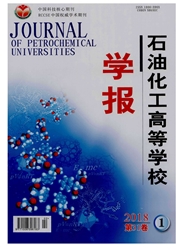

 中文摘要:
中文摘要:
油品储罐内壁的腐蚀产物主要有Fe2O3、Fe3O4、Fe(OH)3等,它们与储罐内H2S气体反应生成的硫铁化合物都有一定的自燃性,其自发氧化放热是含硫油品储罐发生火灾与爆炸事故的主要原因。通过模拟储罐内的条件,利用Fe2O3、Fe3O4、Fe(OH)3与H2S气体反应制备硫铁化合物,通过观察氧化过程中的温度变化测定其自燃性。结果表明,同一条件下硫化生成的不同硫铁化合物自燃性存在着显著的差异,扫描电镜和能谱分析表明,不同硫铁化合物的元素分布相似,其自燃性差异与其微观结构的不同密切相关。
 英文摘要:
英文摘要:
Inner oil tank wall corrosion products are mainly iron oxide red, iron oxide black and iron hydroxide. These corrosion products can react with hydrogen sulfide in the tank. The spontaneous oxidation and heat-release of sulfide productiron sulfides is the main cause of the fires in the oil tanks. The reaction in oil tanks was simulated and the oxidation tendency of iron sulfides formed was studied by observing the temperature change. Results show that the pyrophorisity of various sulfide products are different. SEM and EDS analysis indicate that the distribution of elements in different sulfurized products are similar and the pyrophorisity between iron sulfides might be related to their structural differences.
 同期刊论文项目
同期刊论文项目
 同项目期刊论文
同项目期刊论文
 期刊信息
期刊信息
